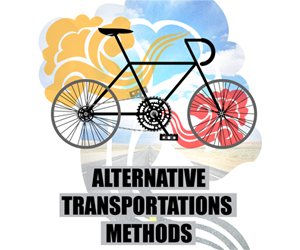
Shoppers like the idea of buying produce from local suppliers because it means they can get fresher and healthier foods, strengthen local economies, and have direct contact with food producers. Social entrepreneurs are recognising this and are developing new ways to make agriculture an integral part of urban life.
Here are 10 different projects currently underway, which use new technology (such as aquaponics – a system in which fish waste fertilizes plants), vacant land and rooftops, and other ideas to develop new types of relationships between cities and food.
1. GrowUp Box, London, UK
A 20-foot shipping container in London, called the GrowUp Box, is home to an aquaponic system and supplies restaurants nearby with fresh fish and green vegetables. GrowUp Box farms tilapia fish in tanks and uses the waste produced by the fish to fertilize greens, which are grown in vertical The water from the fish tanks is circulated through the columns, providing nourishment to about 400 plants.
2. Urban Organics, St. Paul, Minnesota, US
A former commercial brewery in Minnesota has been turned into an aquaponics operation called Urban Organics. The company supplies salad greens and fish to nearby grocery stores and restaurants. The system uses just 2% of the water of conventional agriculture. The goal of the project is to prove that aquaponics can be a money-making business within urban areas, and help spark economic development in the area.
3. Sky Greens, Lim Chu Kang area, Singapore
Singapore has little land available for farming, so Inventor and entrepreneur Jack Ng created the Sky Greens system to grow more food in less space. Sky Greens harvests and delivers vegetables to Singaporean markets. Plants such as lettuce, spinach and a variety of Asian greens are grown on a tall, narrow A-frame structure that slowly rotates the plants to make sure they get enough sunlight.
4. Beacon Food Forest, Seattle, Washington, US
Public land in Seattle is being turned into an edible forest garden, called the Beacon Food Forest. Residents can forage (search) in the garden for fruits, pumpkins and nuts. The garden is around 28,000 square metres in size and is next door to to a city park. The project aims to imitate a natural ecosystem, creating a space that requires less maintenance and offers larger harvests than other spaces.
5. Prinzessinnengarten, Berlin, Germany
The Prinzessinnengarten is an urban farm which is next to part of the wall that used to divide the city of Berlin in two. A variety of vegetables are grown in recycled, easy-to-move containers, such recycled Tetra Paks, rice sacks, and plastic crates. The entire garden can be moved if needed. Visitors are encouraged to join programs where they can learn about seed harvesting and vegetable pickling, or to try food made from the garden’s produce in the garden’s cafe.
6. Brooklyn Grange, Brooklyn, New York, US
The Brooklyn Grange in New York uses the rooftops of two city office buildings to grow fresh local vegetables and herbs. It is the largest rooftop soil farm in the world. 22,000 kilograms of organic produce (grown without pesticides) per year. Brooklyn Grange also provides urban farming and green roof consulting and installation services, and partners with non-profit organizations throughout New York to promote healthy and strong local communities.
7. Deu Horta Na Telha, São Paulo, Brazil
The Deu Horta Na Telha project turns roofs, balconies and paved areas across the city of Sao Paulo into small farms. Large roof tiles are turned upside down, creating a V-shaped trough that can be filled with soil. These are then planted with vegetables. Because the tiles are watertight, they hold in moisture, which means that growers can make the most of a limited water supply.
8. Lufa Farms, Montreal, Canada
On two rooftops in Montreal, Lufa Farms has built two greenhouses – a “local food engine” – that cover 7,000 square metres. The greenhouses produce a range of vegetables: greens and herbs, peppers and eggplants. These are delivered to approximately 4,000 customers each week. The produce is packaged with locally sourced goods like handmade pastas, fresh bread and dark baking chocolate to support the local industry.
9. Farmery, North Carolina, US
The Farmery, is an 8,000-square-foot market in North Carolina that grows its own mushrooms, greens and fruits. The goal is to make the journey from farm to store more efficient by eliminating transport as much as possible. Food shopping can be found on the lower levels and mushrooms, greens and fruits growing on the upper level. Whatever is not grown on site will be sourced from the nearby area.
10. Pasona Group, Tokyo, Japan
The Pasona Group, a human resources company, has incorporated plants into the spaces of its head office in Tokyo. The plants, which include tomatoes, herbs and rice, are prepared and served in the company cafeteria. The project aims to use greenery to relax employees, encourage creative thinking about agriculture and make a sense of community as employees look after the crops.
Urban farming is not a far-fetch and difficult thing to do for city dwellers like us. Why not be a part of this Edible Garden City and make our country a more sustainable one? What would you start growing today?
Source: http://www.theguardian.com/sustainable-business/2014/jul/02/next-gen-urban-farms-10-innovative-projects-from-around-the-world


















